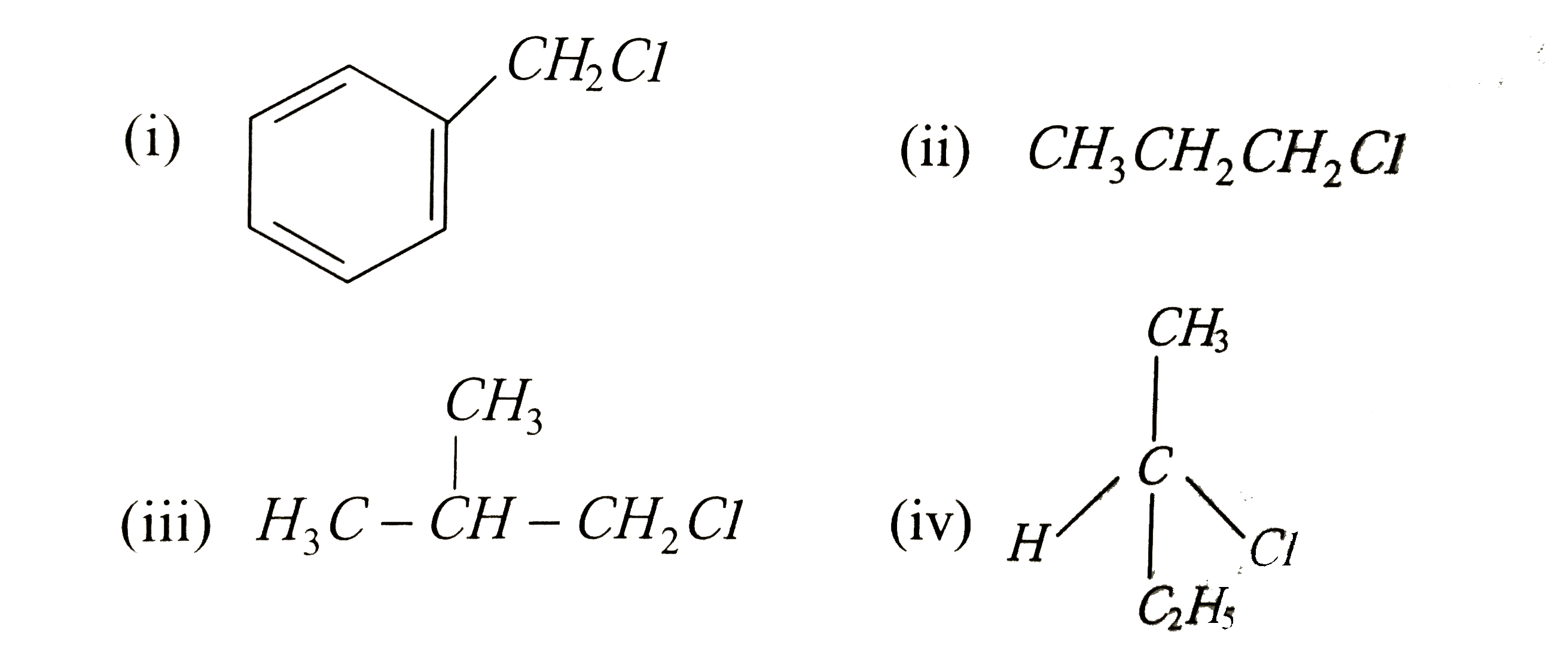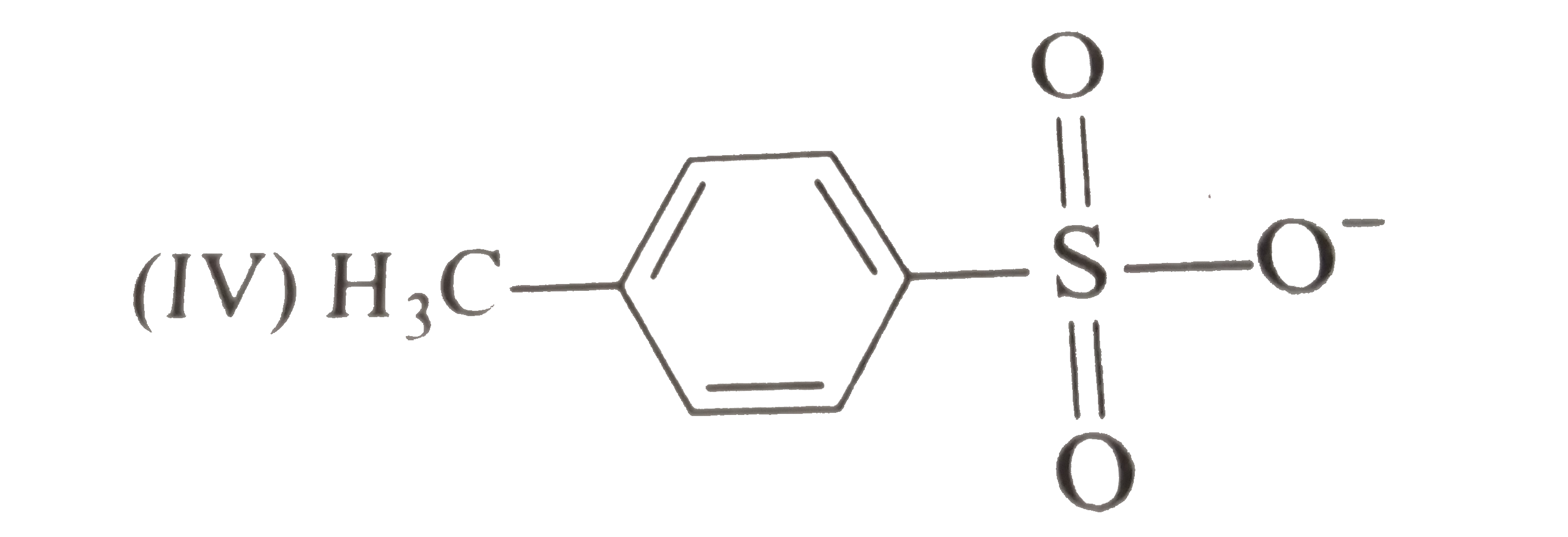Complete Solutions to Dipole moment, resonance and reaction intermediates of chapter GENERAL ORGANIC CHEMISTRY of Class 12 book with complete answers and questions
| Class 12 | CHEMISTRY |
| Chapter | GENERAL ORGANIC CHEMISTRY |
| ERRORLESS | Dipole moment, resonance and reaction intermediates |
| Number Of Questions | 73 |
| Academic Year | 2023-24 |
Which one of the following orders is correct regarding the inductive effect of the substituents
03:44View SolutionWhich of the following is not an electrophile
04:13View SolutionWhich one of the following compounds will be most readily dehydrated?
03:02View SolutionWhich of the following compounds will undergo racemisation when solution of KOH hydrolyses
 02:23View Solution
02:23View SolutionWhich of the following is the most correct electron displacement for a nuclephilic reaction to take place ?
04:55View SolutionThe correct order of strengths of carboxylic acids

is05:12View SolutionIn pyrrole

the electron density is maximum on02:06View SolutionArrange the following in increasing order of stability
`(CH_(3))_(2)overset(o+)(C)-CH_(2)-CH_(3)` (2) `(CH_(3))_(3)overset(o+)(C)`
(3) `(CH_(3))_(2)overset(o+)(C)H` (4) `CH_(3)overset(o+)(C)H_(2)`
(5) `overset(o+)(C)H_(2)`07:02View Solution`C-C` bond length in benzene is
01:23View SolutionThe dipole moment is the highest for
07:06View SolutionWhich of the following contains three pairs of electrons
03:23View SolutionWhich of the following is the most stable compound?
02:34View SolutionWhich kind of fission is favoured by sunlight
02:33View SolutionOrbital interaction ( partial overlapping ) between the sigma bonds of a substituent group and a neighbouring pi orbital is known as
00:44View SolutionWhich species are more resonance stabilized in the following pairs:
`[C_(6)H_(5)Cl, C_(6)H_(5)CH_(3)], [CH_(2)=CHCl, CH_(2)=CHCH_(2)Cl]`,
`[C_(6)H_(5)Br, C_(6)H_(5)CH_(2)Br], [CH_(3)COOH, CH_(3)COO^(-)]`03:30View SolutionWhich one of the following carbanions is the least stable?
02:48View SolutionWhich among the following statements are true with respect to electronic displacement in a covalent bond?
(1) Inductive effect operates through a `pi` - bond
(2) Resonance effect operates through a `sigma`-bond
(3) Inductive effect operates through a `sigma` -bond
(4) Resonance effect operates through a `pi-`bond
(5) Resonance and inductive effects operate through `sigma`-bond04:57View SolutionThe temporary effect in which there is complete tranfer of a shared pair of pi-electrons to one of the atoms joined by a multiple bond on the demand of an attacking reagent is called
03:50View SolutionThe least stable free radical is
04:54View SolutionThe shape of the carbonium ion is
01:23View SolutionC-Cl bond in `CH_(2) = CH - Cl` is difficult to cleave due to
01:59View SolutionWhich is a nucleophile
03:03View SolutionHyperconjugation is also known as
01:51View SolutionRelative stabilities of the following carbocations will be in the order
`{:(overset(o+)(C)H_(3),CH_(3)overset(o+)(CH_(2)),overset(o+)(C)H_(2)OCH_(3),),((i)," "(ii)," "(iii),):}`04:23View SolutionWhich of the following molecules does not have net dipole moment?
03:25View SolutionCompound which shows positive mesomeric effect
04:17View SolutionAromatic properties of benzene are proved by
02:04View SolutionAmongst the given structures , which are permissible resonance forms ?
01:32View SolutionWhich one of the following will be the most easiliy attacked by an electrophile?
02:25View SolutionWhich compound shows dipole moment
05:31View SolutionThe species responsible for nitration is
02:50View SolutionC-C' bond length in benzene lies between single and double bond. The reason is
04:39View SolutionChoose the chain terminating step
(1) `H_(2) rarr H^(*)+H^(*)`
(2) `Br_(2) rarr Br^(*) + Br^(*)`
(3) `Br^(*) + HBr rarr H^(*) + Br_(2)`
(4) `H^(*) + Br_(2) rarr HBr + Br^(*)`
(5) `Br^(*) + Br^(*) rarr Br_(2)`01:50View SolutionArrangements of `(CH_(3))_(3)C-,(CH_(3))_(2)CH-,CH_(3).CH_(2)-` when attached to benzyl or `n` unsaturated group in increasing order of inductive effects is:
02:24View SolutionDue to the presence of an unpaired electron, free radicals are:
02:39View SolutionThe decreasing order of nucleophilicity among the nucleophiles is :
(I) `CH_(3)-underset(O)underset(||)C-O^(-)`
(II)`CH_(3)O^(-)`
(III) `CN^(-)` (IV) 06:10View Solution
06:10View SolutionThe increasing order of stability of the following free radicals is :
03:35View SolutionAmong the following mixiture dipole-dipole as the mojor interaction is present is
03:59View SolutionArrange the carbonions,
`(CH_(3))_(3)overset(-)C, overset(-)C Cl_(3), (CH_(3))_(2) overset(-)CH, C_(6)H_(5)overset(-)CH_(2)` in order of their decreasing stability02:52View SolutionIn carbonium ion the carbon bearing the positive charge in the
02:25View SolutionWhich of the following is observed in ethylene molecule
02:41View SolutionWhich of the following is a polar compound
04:49View SolutionAn aromatic among other things should have a `pi`-electron cloud containing electrons where n can't be
01:14View SolutionWhich of the following is an electrophile ?
02:22View SolutionThe presence of the chlorine atom on benzene ring makes the second substituent enter at a position
04:42View SolutionWhich is most stable carbocation?
02:41View SolutionThe ascending order of stability of the carbanion `overset(-)(C)H_(3)(P), C_(6)H_(5)overset(-)(C)H_(2)(Q), (CH_(3))_(2)overset(-)(C)H(R)` and `H_(2)overset(-)(C)-CH = CH_(2)` is
05:11View SolutionThe descending order of stability of the carbanion ions
`underset((I))(C_(6)H_(5)overset(+)(C)H_(2)),underset((II))(p-(CH_(3)O)C_(6)H_(4))overset(+)(C)H_(2), underset((III))(p-(NO_(2))C_(6)H_(4)overset(+)(C)H_(2))` and `underset((IV))(p-(CH_(3))C_(6)H_(4)overset(+)(C)H_(2))` isView SolutionStability of iso-butylene can be best explained by
03:36View SolutionPolarisation of electrons in acrolein may be written as :
02:14View SolutionWhich of the following will show aromatic behaviour
06:52View SolutionThe order of decreasing stability of the carbanions
(1) `(CH_(3))_(3)bar(overset(..)(C))` (2) `(CH_(3))_(2)bar(overset(..)(C))H`
(3) `CH_(3)bar(overset(..)(C))H_(2)` (4) `C_(6)H_(5)bar(overset(..)(C))H_(2)` is01:54View SolutionBenzene is unreactive because
04:13View SolutionMesomeric effect involves delocalization of `:`
03:20View SolutionChloroacetic acid is a stronger acid than acetic acid this can be explained using
02:20View SolutionThe stability of `Me_(2)C=CH_(2)` is more than that of `MeCH_(2)CH=CH_(2)` due to :
03:48View SolutionAmong the following carbocations the order of stability is :
(I) `Ph_(2)overset(+)"C"CH_(2)Me`
(II) `PhCH_(2)CH_(2)overset(+)"C"HPh`
(III) `Ph_(2)CHoverset(+)CHMe`
(IV) `Ph_(2)C(Me)overset(+)"C"H_(2)`04:20View SolutionFor the following anion,

the resonance structure that contributes most is03:43View SolutionWhich of the following intermediates have the complete octet around the carbon atom?
05:14View SolutionReactivity towards nucleophilic additions reaction of (I) IHCHO (II), `CH_(3)CHO` (III) `CH_(3)COCH_(3)` is
02:35View SolutionWhich of the following requires radical intermediate
View SolutionArrange the following free radiacals in order of decreasing stability.
Methyl (I), Vinyl(II), Allyl(III), Benzyl(IV)04:05View SolutionCarboxylic acids are easily ionised. The main reason of this statement
02:18View SolutionThe compound which gives the most stable carbonium ion on dehydration is
01:59View SolutionAssertion : Aniline is better nucleophile than aniline ion.
Reason : Aniline ion have +ve charge.04:11View SolutionAssertion : The presence of nitro group facilitates nucleophilic substituation reactions in aryl halides.
Reason : The intermediate carbanion is stabilised due to the presence of nitro group.05:07View Solution(A) Tertiary carbocations are generally formed more easily than primary carbocations.
(R) Hyperconjugation as well as inductive effect due to additional alkyl groups stabilize tertiary cabocations.04:41View SolutionAssertion: The order of reactivity of carbonium ions is `1^(@)gt2^(@)gt3^(@)`.
Reason: Carbon atom in carbonium ions is in `sp^(3)` state of hybridisation.03:08View SolutionAssertion : Free radicals are short lived and highly reactive.
Reason : Free radicals are highly unstable.01:40View SolutionAssertion : Same number of electron pairs are present in resonance structures.
Reason : Resonance structures differ in the location of electrons around the constituent atoms.01:16View SolutionWhich one is the correct order of acidity ?
04:22View SolutionWhich one is the most acidic compound?
02:42View SolutionThe correct statement regarding electrophile is
01:56View Solution
Dipole moment, resonance and reaction intermediates questions and complete solutions for chapter GENERAL ORGANIC CHEMISTRY of UNIVERSAL BOOK DEPOT 1960 CHEMISTRY (HINGLISH) of Class 12
All Exercises from ERRORLESS Class 12 CHEMISTRY GENERAL ORGANIC CHEMISTRY
- Classification and nomenclature of organic compounds
- Comprehension type questions
- Critical Thinking (Objective Questions)
- Dipole moment, resonance and reaction intermediates
- Integer type questions
- JEE Section (More than one choice correct answer)
- JEE Section (Only one choice correct answer)
- Matrix Match type questions
- Ordinary Thinking (Bonding and hybridsation in organic compounds)
- Organic reactions and their mechanism
- Reasoning type questions
- Structural and stereo isomerism
